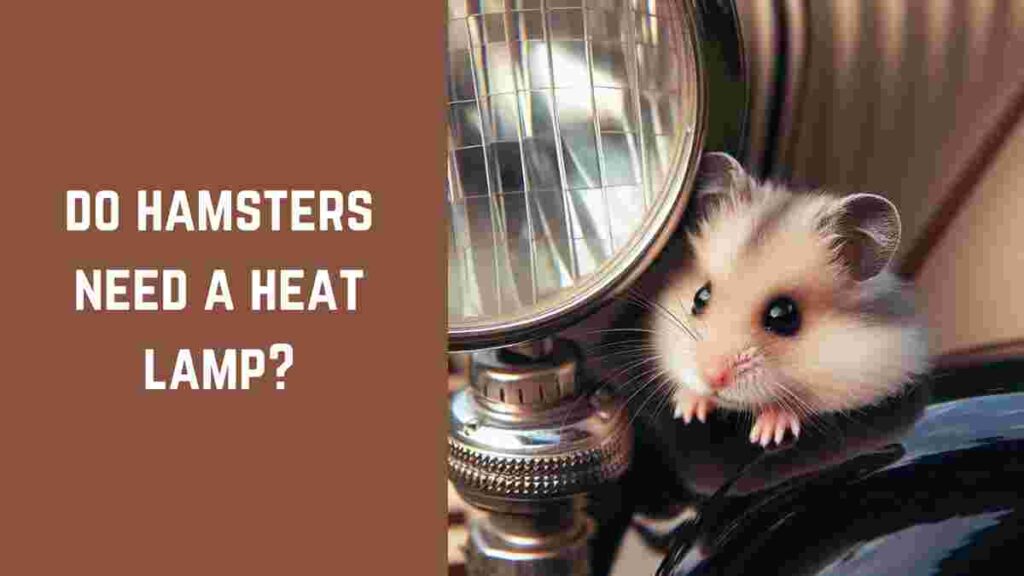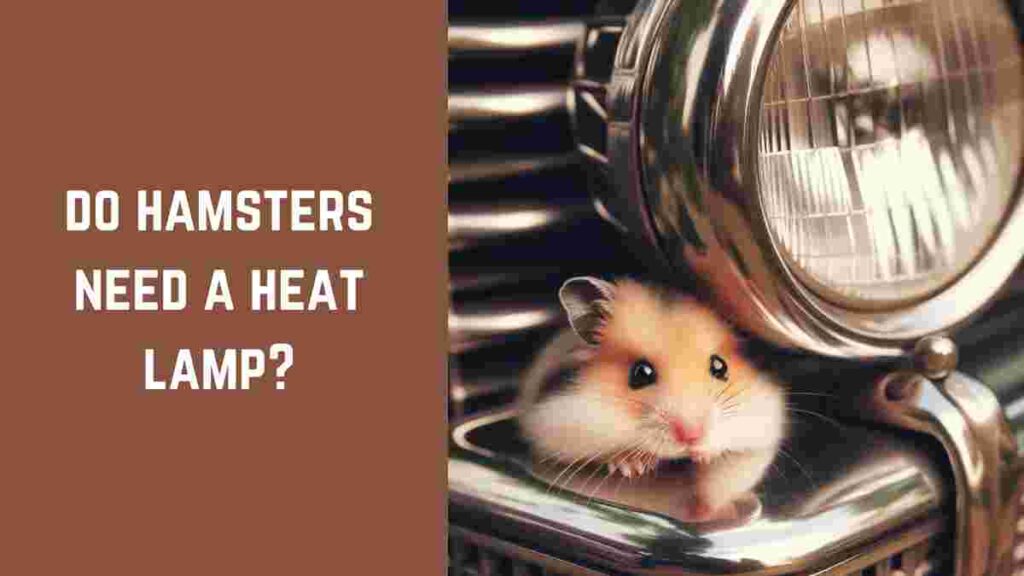Do Hamsters Need a Heat Lamp: When it comes to creating a comfortable and healthy environment for our furry friends, understanding the nuances of their needs is paramount. This is especially true for hamsters, small creatures with specific habitat requirements that can significantly impact their well-being. One question that often arises among hamster enthusiasts and pet owners is whether hamsters need a heat lamp to maintain the right temperature.
In this blog post, we’ll explore the optimal conditions for keeping your hamster happy and healthy, alternative methods to keep them warm, the risks of overheating, and practical tips for temperature control.
Click here to ensure the best nutrition for your rodent friend
Find the best hamster wheels from here

Table of Contents
The Importance of Maintaining the Right Temperature for Hamsters – Do Hamsters Need a Heat Lamp?
Hamsters are incredibly resilient creatures, having adapted to various climates in their natural habitats. However, when it comes to domestic care, ensuring they live in an environment that mimics their natural setting as closely as possible is essential for their health and happiness. Temperature plays a crucial role in this, as extreme conditions can lead to stress, health issues, and in severe cases, even death.
Do Hamsters Need a Heat Lamp?
The short answer is, not always. Hamsters thrive in temperatures ranging from 65°F to 75°F (18°C to 24°C). Anything below or above this range can cause discomfort or health problems for your pet. While a heat lamp can be a source of warmth during colder months, it’s not necessarily the best or only solution. It’s vital to consider the specific needs of your hamster, including their breed, age, and health condition, as well as the overall climate in your area.

Alternatives to Heat Lamps: Natural and Artificial Methods of Keeping Hamsters Warm
There are several effective ways to maintain a comfortable temperature for your hamster without resorting to a heat lamp:
- Insulation: Properly insulating your hamster’s cage can help retain heat. Consider placing the cage away from windows, doors, and air conditioning vents to avoid drafts.
- Bedding: Providing ample, high-quality bedding material allows hamsters to burrow and retain body heat. Aspen shavings or paper-based substrates are excellent choices.
- Heating Pads: Placing a heating pad beneath part of the cage can offer a gentle source of warmth. Be sure to monitor the temperature closely to prevent overheating.
The Risks of Overheating
While keeping your hamster warm is crucial, it’s equally important to guard against overheating. Hamsters cannot sweat and rely on panting and other methods to cool down. Signs of overheating include lethargy, panting, and drooling. To prevent this:
- Avoid Direct Sunlight: Never place your hamster’s cage in direct sunlight, as it can quickly lead to overheating.
- Monitor Heat Sources: If you use a heat lamp or pad, ensure it doesn’t raise the habitat’s temperature beyond the optimal range.
Practical Tips for Maintaining the Ideal Temperature in a Hamster’s Habitat
- Regular Monitoring: Keep a thermometer in or near the cage to monitor the temperature regularly.
- Gradual Changes: Any changes to your hamster’s environment should be introduced gradually to avoid stress.
- Ventilation: Ensure the cage is well-ventilated to prevent stagnant, overly warm air from becoming trapped inside.
Conclusion – Do Hamsters Need a Heat Lamp?
Creating the perfect living conditions for your hamster doesn’t have to be a daunting task. While heat lamps can be beneficial in certain scenarios, they’re not a one-size-fits-all solution. By understanding the specific needs of your pet and employing alternative methods to maintain the right temperature, you can ensure your hamster leads a comfortable, happy life.
Are you a proud hamster parent with tips to share, or are you considering adopting one and have questions? Join the conversation below and share your experiences and queries about keeping your hamster warm and cozy. Together, we can create a thriving community of informed and caring hamster enthusiasts.

Frequently Asked Questions (FAQ) – Do Hamsters Need a Heat Lamp?
Can hamsters survive without a heat source in winter?
Yes, hamsters can survive without a direct heat source like a heat lamp in winter, provided their environment is kept within their ideal temperature range of 65°F to 75°F (18°C to 24°C). Using insulation, appropriate bedding for burrowing, and occasionally a heating pad can help maintain this range without direct heat.
How can I tell if my hamster is too cold?
Signs that a hamster is too cold include inactivity or lethargy, huddling in a corner, and appearing ‘puffed up’. Providing deeper bedding for burrowing and ensuring the cage is insulated and away from drafts can help prevent your hamster from getting too cold.
What type of bedding is best for keeping my hamster warm?
Paper-based bedding or aspen shavings are great choices for keeping your hamster warm. They allow for effective burrowing and insulation, helping your hamster to retain body heat. Avoid cedar or pine shavings as they can be harmful to your hamster’s respiratory system.
Are heating pads safe for hamsters?
Heating pads can be safe for hamsters if used correctly. They should be placed under only one part of the cage to provide a gradient, allowing the hamster to choose a comfortable spot. It’s crucial to monitor the temperature closely to ensure it stays within the safe range.
My home is very cold; can I use a space heater to warm my hamster’s area?
While using a space heater can slightly warm the area around your hamster’s cage, it’s important to monitor the temperature closely to avoid overheating. Ensure the heater is not too close to the cage and that there’s no direct hot air blowing on the cage. It’s better to focus on insulating the cage and providing adequate bedding.
